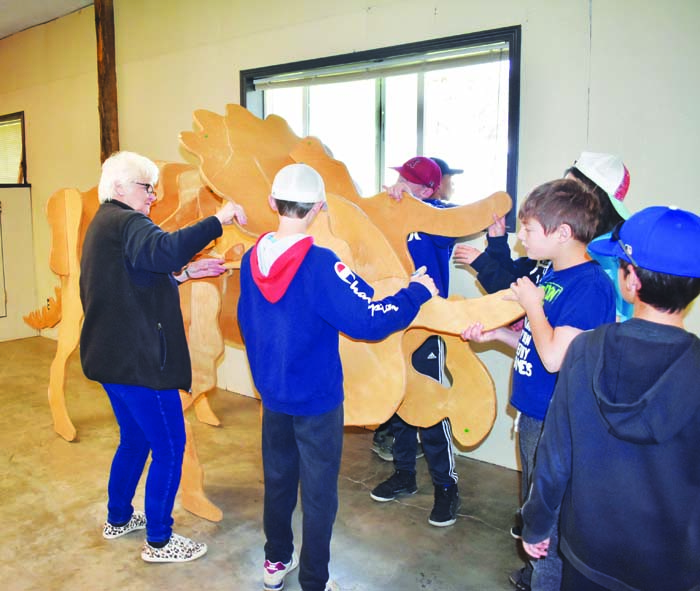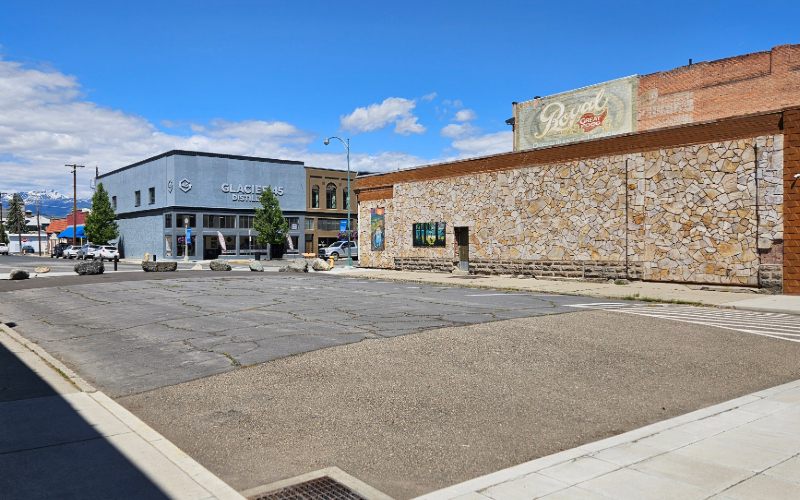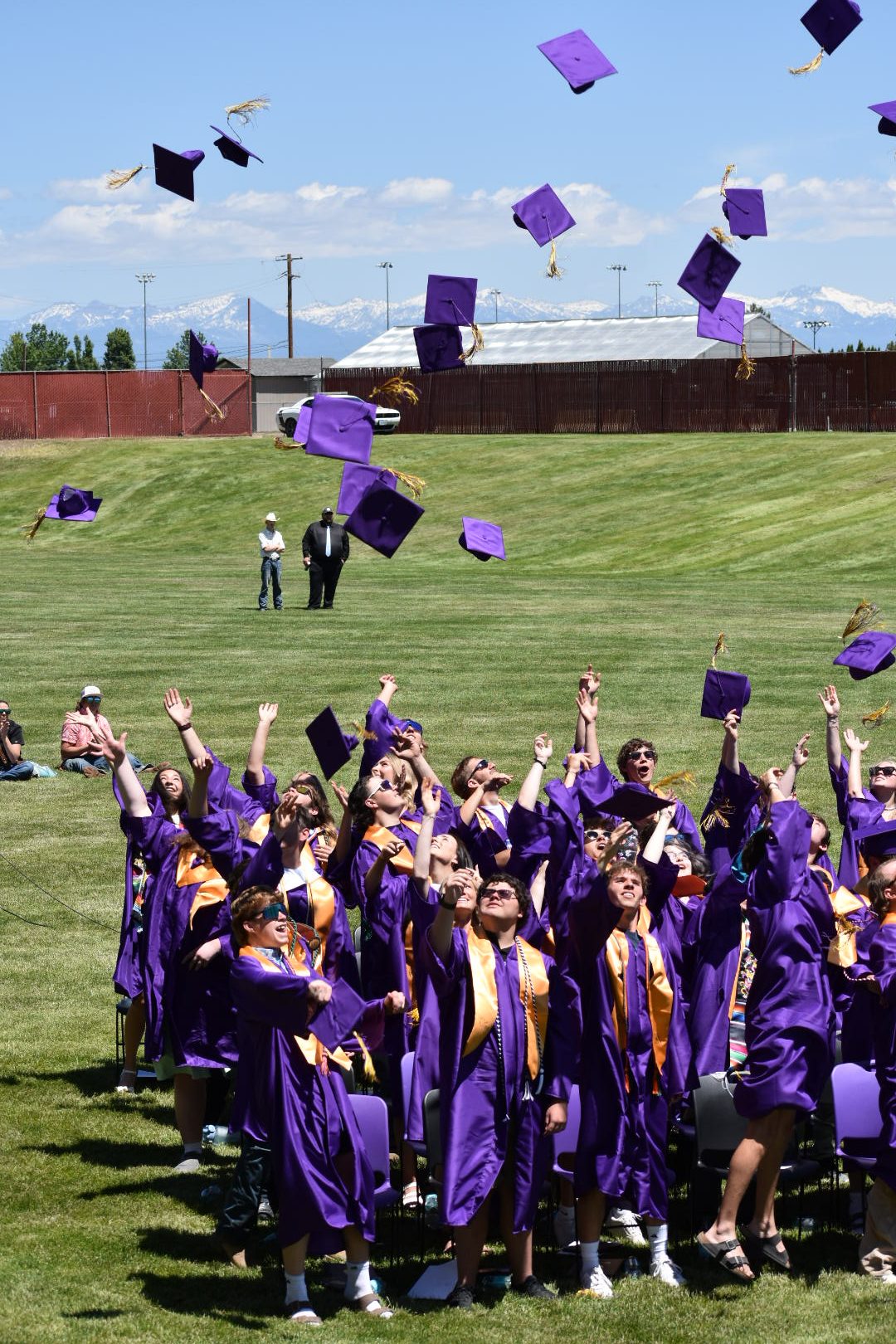Sixth graders take their learning outdoors
Published 2:00 pm Friday, May 27, 2022

- On May 23, 2022, Baker School District sixth graders rotated through stations, including one with dinosaur puzzles, at Camp Elkanah's outdoor school program.
CAMP ELKANAH — Jean Ann Mitchell ended the botany lesson with a snack.
But not just any snack — this one was bright yellow, full of petals, and in abundant supply across the meadow.
“Those are each flowers,” she said, picking apart the dandelion head as the students leaned it for a look.
Each of those petals is edible — and nearly every sixth grader tried at least a taste of the common flower.
Then the bell rang and the kids made their way to a different type of meal — homemade macaroni and cheese prepared to feed kids after a morning of outdoor school activities.
Sixth graders from South Baker Intermediate School and Haines Elementary arrived at Camp Elkanah, near Ukiah about 70 miles northwest of Baker City, on May 23 for this year’s outdoor school.
They stayed two nights, and returned home Wednesday, May 25.
This year Camp Elkanah staff organized the schedule, programs, volunteers and handouts.
In Oregon, outdoor school opportunities have been funded by lottery dollars since the passage of Measure 99 in 2016.
The purpose of that measure was to establish a permanent fund so every Oregon school student had the opportunity for a week of science-based education.
The Oregon State University Extension Service is responsible for distributing the funds.
“Suddenly, everyone needed outdoor school, and there’s not enough outdoor school providers,” said Kaitlin Gustafson, program director at Camp Elkanah.
At first, a school would rent the facility and then organize its own programming.
“What (OSU) heard from school districts is that this is a lot of work,” she said.
So now Camp Elkanah provides the experience.
Gustafson and her husband, Josh, live full-time at Camp Elkanah with their family. In addition to outdoor school, they provide summer camps and retreats.
The facility is busy from April to November. This was the fifth week they welcomed a school.
“It’s a really cool opportunity to get involved in the community,” she said.
Plus, she said it’s nice for kids to be in nature.
“You’re outside, no screens. They’re actually interacting with each other,” she said.
In 2020, as the coronavirus prompted schools to close, she said some outdoor schools went online and livestreamed programs.
“We didn’t go online,” Gustafson said.
In response to the hardship faced by outdoor school providers, OSU developed grant programs in December 2020 to help improve accessibility and inclusivity.
Gustafson said the grants they received are funding two new accessible restroom facilities, and will revamp two cabins.
Students study multiple subjects
The spring of 2021 brought day camps back to Camp Elkanah, with schools coming from La Grande, Union, Umatilla and Irrigon.
This spring, they’ve welcomed two schools every week for overnight experiences.
“We provide the structure, content, food and lodging,” Gustafson said. “The schedule changes based on group size and when presenters are available.”
School staff members are responsible for managing the students.
For the Baker School District students, day one involved challenges — a zip line, climbing tower, swing and team-building ropes course.
On day two, small groups rotated through six stations: entomology, fishing, weather, dinosaurs, botany and DEQ.
“We piece together who’s available,” Gustafson said.
As people return to more normal work schedules, she said calendars are filling up quickly for those who usually teach at outdoor school.
The weather has been tough, too.
“This spring has been especially challenging with the weather,” she said. “We had everyone inside at times — we had to get out of the snow.”
But Tuesday, May 24, was a sunny day that found everyone outside, looking at trees and plants and inspecting water samples collected from the creek.
At the DEQ station, Phil Richerson and John Dadoly taught about surface water and groundwater.
“How we make a mess, and how can we minimize that mess?” Richerson said. “How can we live our lives but leave as small a mess as possible?”
These two have been frequent presenters at Camp Elkanah.
“We’re probably going to talk to 900 or a thousand kids this year,” Richerson said.
Staff from their Pendleton office rotate turns at outdoor school.
“We’ve done this for 20 years. This is our biggest year yet,” Dadoly said.
This station heard frequent giggles and groans as Richerson demonstrated surface water sources with his three-dimensional model.
On the fake landscape, he sprinkled excess dirt (the kids suspected it was actually cocoa powder), too much fertilizer and pesticide (it looked like salt), and dripped simulated oil on the roadways.
And then the sewage treatment plant overflowed into the stream.
“Ewwwww!” came the response to the brown sludge flowing across the model.
Richerson simulated a rainstorm — with a spray bottle — to show how all the contaminants washed into the lake where the town sourced its drinking water.
When he finished, the lake was brown with chunks from the cattle pasture.
But then he cleaned it up, and showed how a few changes could minimize the mess, such as hay bales around the construction site, a fence around the cows, upgraded equipment at the treatment plant, and recycling motor oil instead of dumping it down the drain.
This time, when it rained, the lake wasn’t nearly as murky.
“Can it be perfectly clean? No, we’re always going to make a mess. But we can minimize it,” he said.




